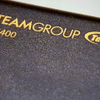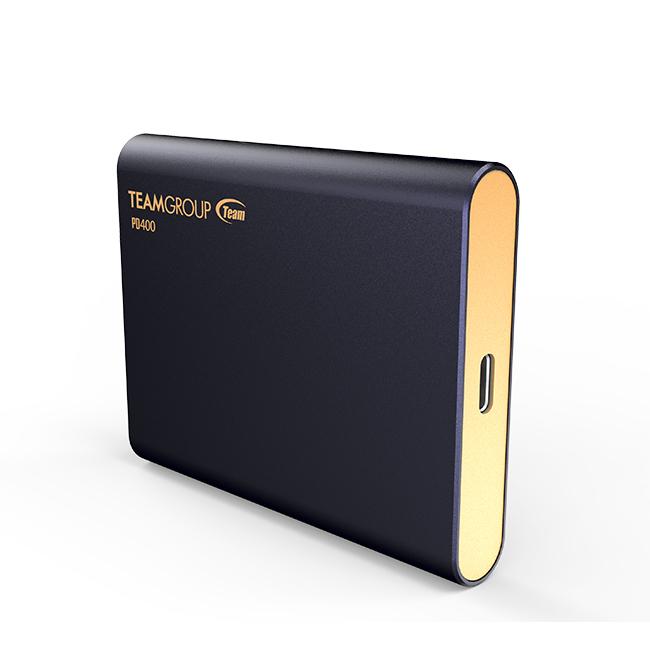Final Words & Conclusions
Final Words & Conclusions
As per normal, I will split this section up into a 'why should' and 'why shouldn't you buy the PD400. I think, in general, it would be both easy and a cop-out to summarise my thoughts on the PD400 as 'Ok, but just ok.' However, for those looking for a more in-depth discussion that brings all of my results together, read on.
Why should you buy the PD400?
The first could really be applied to all external SSDs on the market, but Team Group deserves some accolade for not cheaping out in an area where it would have been very easy to. Looks, and build quality. I think, even objectively speaking, that nobody could deny the PD400 is a good-looking bit of kit. Sure, it's not exactly colour neutral, and blue/bronze won't go with absolutely everything, but - to me - it has a huge appeal visually. It's not garish, either, which is a nice plus point. Similarly, the drive's build quality is on point. Not heavy, by any means, but it certainly could survive a few drops from height without a problem. It feels solid, well made, and looks good. Moving on.
A point that isn't normally discussed in our drive reviews is heat. Like any electrical component, an SSD can easily heat up if put under sustained loads. The good news here is that in a 22C ambient temperature room, a drive hit with multiple sustained reads/writes did not throttle its performance to any noticeable degree. I have a suspicion that the PD400's squat but wide design, combined with a metal frame, is helping to passively disperse heat as it accumulates. Perhaps the biggest point in the PD400's favour, however, is a major 'Price vs. Performance' element. It is a way cheaper than the Seagate product, and - when at RRP - a mile cheaper than the T5 from Samsung. It is certainly cheaper 'enough' to be competitive, and that is just as well, because... we have already seen that whilst the PD400 is more than able to muscle against the Seagate and T5 in some areas, it loses fairly big in others. The lower price might well be low enough for some buyers to be interested in saving a penny or two over some lower performance in 'some' scenarios. That is, of course, entirely down to your use case. My point here is that whilst the PD400 may suffer performance dips in certain tests, it is a lot cheaper than its high-performance competitor, and still ways cheaper than the Seagate product. That in itself is a good reason but combine that with relatively competitive performance in most tests, and it cannot be declared a bad investment by any stretch of one's imagination.
Why shouldn't you buy the PD400?
As some might expect, the ending paragraph to the why you 'should' buy the PD400 is also the beginning to why you shouldn't. I made the point that in terms of Price vs. Performance, the PD400 is competitive. That it is, and it cannot be denied. There are, however, some problems with this argument. The first is that where the PD400 suffers, it seems to 'really' suffer, losing hard against a drive that is - at the end of the day - only c. £40 more when it sells for RRP, and closer to only £30 more when slightly discounted. Whilst the 'Fast' SSD from Seagate was generally beaten by small margins by the PD400, it was - in my view - a more consistently performing product, not prone to notable performance dips during what I would argue are more 'real' tests, e.g. random 4k read/write. Is £30 extra in my pocket worth that? Well, then we are into the realms of heavy subjectivity, and that is where I cannot draw a definitive 'yes' or 'no' answer. If your use case happens to utilise a workload which exposes the PD400's weaknesses, then I would definitely make the case for losing 90-100MB/s of sequential read/write (for instance). In its stead, I would gain consistency, and anybody in this industry will tell you that consistency is very important. The final element of this three...'ish' way argument concerns pricing itself. The above all assumes that pricing of the PD400 and its various market competitors stays static. News flash, they will not. With the PD400 at under £60, and the Seagate drive at closer to £90, sure, the PD400 is actually a very solid deal. What if the Seagate drive gets discounted, however? What if Samsung have a flash sale of the T5 to clear stock? What if Team Group are forced to up their prices on the PD400? A good example of this 'closer' stack happens in the United States. There, the PD400 is currently discounted to around $59.99, but is more often at the 89-90 USD mark, right up there with the T5 and Seagate product. If that is the case, then your decision is a simple no brainer. T5.
Final Words
I think my summary above of 'Ok, but just ok’ sums up the PD400. In most cases, it holds a solid candle to the Seagate and Samsung drives. When it does so, and is available for a lower cost... sure, I think it's a solid product. However, that lower cost is what I think it should be more priced towards. For that matter, the Seagate drive is - I feel - also overpriced and would be better suited to pricing of around 65-70 USD. However, as I have already alluded to, with all three (also adding whatever other competitors happen to be available) being listed at the same price? The PD400 is not - in my view - worth it. The Seagate 'may' be a little slower in most tests, but it is significantly more consistent. The T5 is... well, it's the T5. Enough said. The PD400 is a good product that is seriously worth your consideration. It would be perfect for on the go professionals/creators who need the raw speed of an external SSD, but at a reduced cost. Editing large photos or even videos would be entirely feasible off this product, and - therefore - in a way, it has achieved its primary goal. Be a cost-effective (when cheaper), good looking, and high-performance (with limitations) product that does as promised. The trouble is... the Seagate drive does all three but doesn't need the brackets. I would imagine the same of WD's 'My Passport SSD', and we know the same of Samsung's T5. In my view, the PD400 exhibits a few too many performance shortfalls and inconsistencies to be worthy of a 'must buy' recommendation, but it can certainly gain my recommendation, albeit with a few considerations to bear in mind.
- Sign up to receive a notification when we publish a new article
- Or go back to Guru3D's front page.



